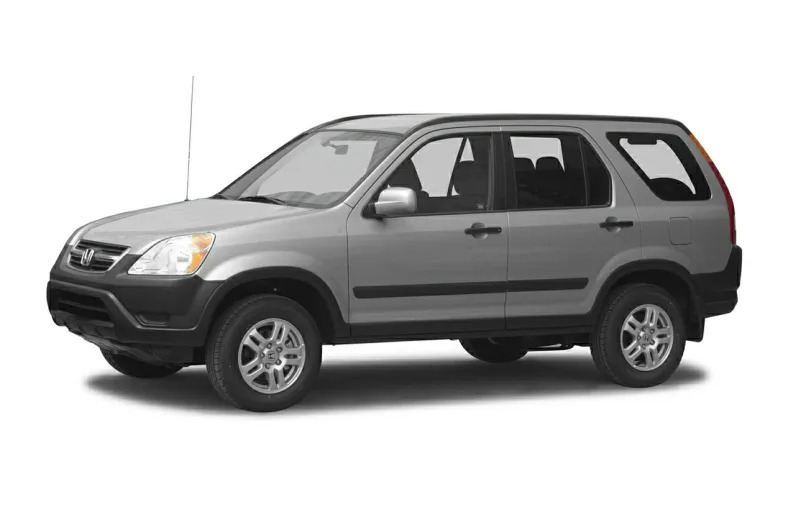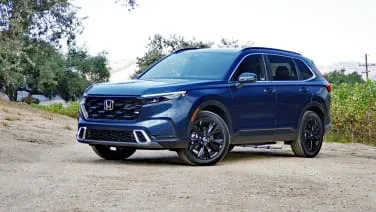EX 4x4
2004 Honda CR-V
The Honda CR-V is roomy, convenient and easy to drive. You can put lots of stuff in it and the back seats are quite comfortable. It rides smoothly, without the jouncy harshness of many SUVs. The CR-V is surprisingly maneuverable in tight quarters and handles well on winding roads. It's also stable in stiff crosswinds at freeway speeds. In short, the CR-V has grown up. Literally. This recently redesigned SUV is bigger, roomier and more powerful than the first-generation CR-V, and it has reclaimed its spot among the best small sport-utilities offered by any manufacturer.
Like Toyota's RAV4, the CR-V was one of the first so-called cute-utes: Not quite a sport-utility, but more than a car, offering an upright seating position, all-wheel drive and decent cargo space. Since it was built on a car platform (the Honda Civic), CR-V's highway-friendly ride and handling made it drive more like a car. This combination attracted buyers who needed a minivan, but wanted something smaller and more maneuverable, and something that didn't look like a minivan.
Since the CR-V was introduced in 1997, the field has grown crowded with competitors such as the Ford Escape, Mazda Tribute and Hyundai Santa Fe. Jeep offers its slightly larger Liberty, which offers off-road capability. A thorough re-do for 2002 put the CR-V squarely back in the game. It still isn't much good off-road, but it's better than competent on the highways and byways where most SUVs are driven most of the time. This Honda beats most of its immediate competitors in both qualitative and quantitative measures, and trails the competition in only a few. Changes for 2004 are limited to a new of power-lock switch on the front passenger door, and new color matching inside.
If you're looking for a reasonably priced, all-purpose vehicle with a sense of adventure and fine foul-weather capability, the CR-V is hard to beat.
Full Review
Full Review
In short, the CR-V has grown up. Literally. This recently redesigned SUV is bigger, roomier and more powerful than the first-generation CR-V, and it has reclaimed its spot among the best small sport-utilities offered by any manufacturer.
Like Toyota's RAV4, the CR-V was one of the first so-called cute-utes: Not quite a sport-utility, but more than a car, offering an upright seating position, all-wheel drive and decent cargo space. Since it was built on a car platform (the Honda Civic), CR-V's highway-friendly ride and handling made it drive more like a car. This combination attracted buyers who needed a minivan, but wanted something smaller and more maneuverable, and something that didn't look like a minivan.
Since the CR-V was introduced in 1997, the field has grown crowded with competitors such as the Ford Escape, Mazda Tribute and Hyundai Santa Fe. Jeep offers its slightly larger Liberty, which offers off-road capability. A thorough re-do for 2002 put the CR-V squarely back in the game. It still isn't much good off-road, but it's better than competent on the highways and byways where most SUVs are driven most of the time. This Honda beats most of its immediate competitors in both qualitative and quantitative measures, and trails the competition in only a few. Changes for 2004 are limited to a new of power-lock switch on the front passenger door, and new color matching inside.
If you're looking for a reasonably priced, all-purpose vehicle with a sense of adventure and fine foul-weather capability, the CR-V is hard to beat.
Hide Full Review
Retail Price
| Engine | 2.4L I-4 |
| MPG | 21 City / 25 Hwy |
| Seating | 5 Passengers |
| Transmission | 5-spd man w/OD |
| Power | 160 @ 6000 rpm |
| Drivetrain | four-wheel |





